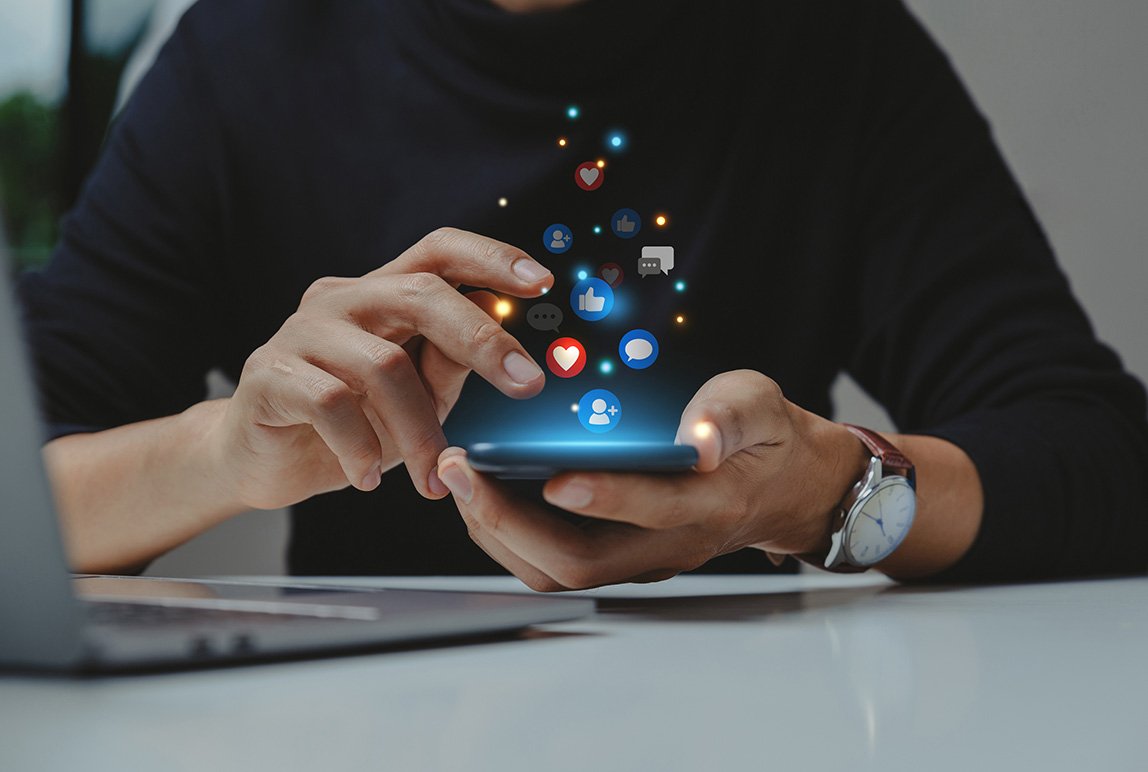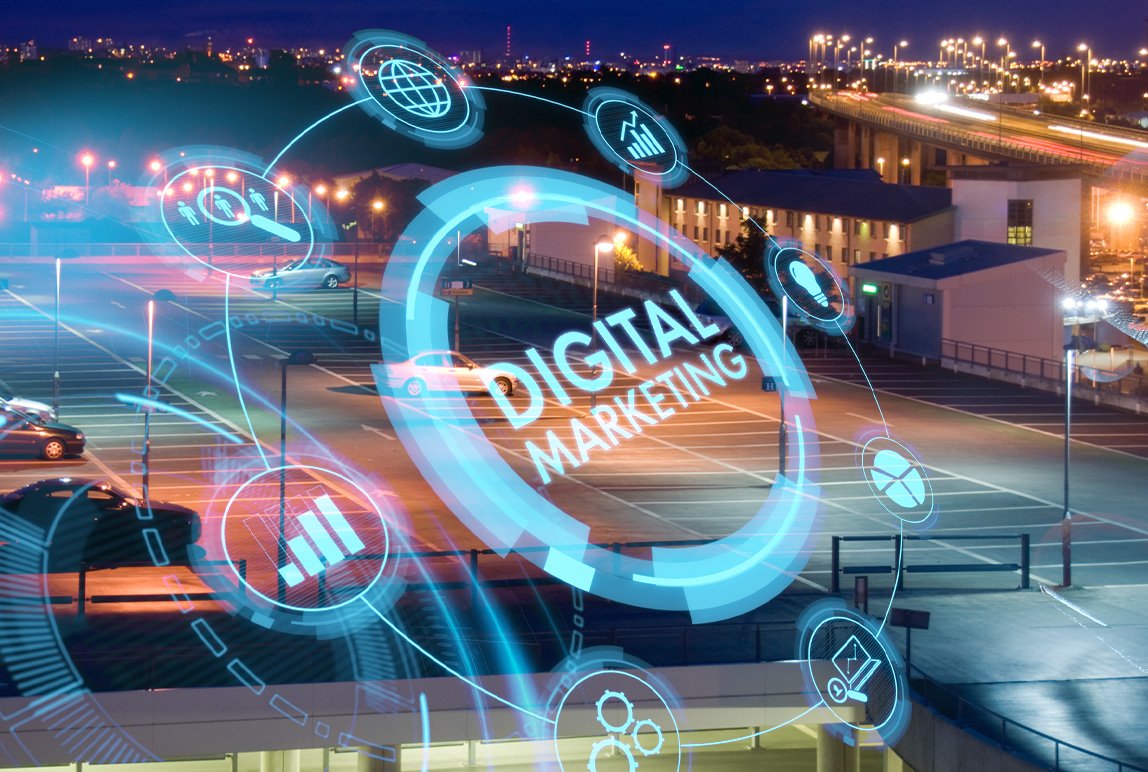Glossary: Parking & Mobility Industry Terms To Know In 2022
Posted: Jan, 04, 2022 1:20PM ET • 23 min read
Over the past several years, advancements in technology and management solutions have accelerated the growth of the parking and mobility industry. Whether you’re a parking operator, supplier, or property manager who oversees a parking program, there are many terms used within the industry you may not know. This glossary defines some of the key parking industry jargon you’re likely to encounter and will bring you up to speed when communicating with others about parking in 2022.
Access Control System (ACS) — A gated system consisting of several hardware and software components that control access to parking facilities.
Alarms — System-generated messages that indicate potential maintenance needs or technical issues with parking equipment (e.g., paper refill required or no communication).
Alternate Side Parking — A traffic regulation that prohibits cars from parking on one side of the street between certain hours of the day.
Artificial Intelligence — Machine learning that uses algorithms to create predictions for parking operation optimizations, such as predicting when and where the highest number of violations occur, showing available parking spots, or projecting peak times.
Automatic Parking System — A mechanical system designed to maximize space for parking. The system uses a system of elevators that automatically transport cars to and from parking spaces across multiple levels, stacking them vertically to minimize land usage.
Barcode Scanner — A device that physically captures and decodes information contained in a barcode.
Bluetooth Low Energy Permit — A parking permit that grants the user access to a facility using a digital permit transmitted via their smartphone’s Bluetooth antenna.
Bluetooth Low Energy (BLE) Reader — An electronic reader that lets users present their parking access credential via their Bluetooth-enabled smartphone or wearable technology, opening the facility’s barrier gate to allow ingress or egress for the verified user.
Bulk Permits — A stack of permits purchased all at once; for example, a department or office may purchase bulk permits to distribute to its guests for a special event.
Cashless Solution — Payments made without coin or bank notes, but instead in the form of electronic payments, such as credit card, debit, mobile wallets, and payment apps.
Centralized Support Services — Supporting multiple aspects of a business in one facility, often to improve speed, efficiency, and security.
Certified Banking Platform — Secure transaction processes integrated into parking equipment that follow the Payment Card Industry (PCI) security standards.
Chip and PIN — A payment method that relies on an embedded chip in a payment card to be inserted into an EMV-certified payment device and requiring users to enter a personal identification number to approve a payment transaction.
Cloud-based — A service, application, or infrastructure hosted on a third-party virtual machine or data centre. Cloud computing lets the user reduce or eliminate hardware and software requirements by purchasing it as an on-demand service accessible via the internet.
Construction Services — The design and logistics for parking lot construction, including lighting, curbs, and sidewalks, parking infrastructure, as well as wayfinding and custom signage.
Contactless Payments — Credit and debit cards, key fobs, smart cards, or other devices that use radio frequency identification (RFID) for making secure payments. The embedded chip and antenna let a customer complete a transaction by waving, tapping, or bringing their card or fob close to the reader at the point of sale.
Controlled Access Parking — A parking facility with a system of hardware and software that controls access to facilities using gates.
CSAE Audited — The Canadian Standard on Assurance Engagements (CSAE) addresses audit engagements undertaken by a service auditor to report on controls at organizations that provide services to user entities when those controls are likely to be relevant to user entities' internal control over financial reporting.
Curb Monetization — Charging a fee for users to park curbside based on market research regarding tolerance for fees in that location and the parking operator’s own business objectives. This will become an increasingly important revenue stream as consumer preferences continue to move toward convenience and autonomous vehicles and ride-sharing programs increase in popularity.
Dashboard Analytics — A web-based page on which real-time information is collated from various sources. The metaphor of a dashboard is adopted to emphasize the nature of the data being displayed on the page; it offers real-time analysis of how a business is operating.
Digital Permit — A parking permit that grants access to a facility electronically, as opposed to a physical medium such as a hangtag or receipt left on a dashboard. These can include traditional forms such as HID access cards or, increasingly, barcodes and QR codes printed out or displayed on a smartphone or completely hands-free options like automatic vehicle identification via license plate recognition, radio transponders, or Bluetooth low energy (BLE) transmitters.
Dynamic Pricing — Parking rates that fluctuate based on supply and demand, often with the aid of parking guidance systems that monitor parking behaviour within a facility and empower parking operators to adjust pricing to optimize the return on their investment.
EMV (Europay MasterCard Visa) — A global standard for interoperation of integrated circuit cards (IC cards or chip cards) and IC card-capable point-of-sale (POS) terminals and automated teller machines (ATMs), for authenticating credit and debit card transactions. EMV chip cards contain embedded microprocessors that provide strong transaction security features not possible with magnetic stripe cards.
Entry Gate — A barrier arm placed at the entrance of a parking lot designed to control the flow of vehicles entering a parking facility.
Ethernet — A type of networking technology. An Ethernet cable is a type of connection that’s very commonly used for communication between various pieces of hardware, such as between a computer and a router, switch, handheld ticket-writer’s downloading cradle, etc.
Event Parking — Parking associated with a special event with resources allocated to it, such as a sports game, city event, or other activity or meeting, that is finite in duration and requires its own dedicated inventory, unique pricing, or both.
Exit Gate — A barrier arm placed at the exit of a parking lot designed to control the flow of vehicles exiting a parking facility.
Financial Services — Secure revenue processing for customer transactions — including administration of cash and coin, and credit and debit card payments — offered by a parking vendor.
Frictionless Parking — A combination of technology and management solutions that makes for an easy, hands-free parking experience from start to finish.
Full-service Parking Solution — A solution offered by a parking equipment and services provider that encompasses all aspects of the parking operation, such as parking management services, parking equipment, technology innovations, construction, facility maintenance, and revenue processing services.
Gate — Also commonly referred to as a barrier, a gate is a piece of hardware used to control access to and from a parking facility.
Gated Parking System — Also known as a Parking Access Revenue Control System (PARCS), a gated parking system uses physical barriers to control access to and from the parking facility in such a way as to force drivers to pay for their parking sessions. Gated systems also include pay stations that can be placed at various points throughout your property (inside or outside) for drivers to purchase parking passes or pay for their parking session before exiting the lot.
Grace Period — The period within which customers can exit a parking facility without having paid; the time is generally customizable and is offered as a goodwill gesture to patrons who may have, for example, entered a parking facility in error Regular rates apply after the grace period has lapsed.
Hands-free Permit — A parking permit that offers a completely touchless entry and exit option. These can include mobile permits that let users access via their smartphone, automatic vehicle identification via license plate recognition, radio transponder, or Bluetooth low energy.
Intelligent Mobility — Smart technology integrations designed to optimize how parking and transportation equipment is powered, used, and connected in the easiest and most efficient and environmentally friendly way.
Lease Agreement — A month-to-month payment arrangement with a parking vendor to supply parking equipment and/or management services.
License Plate Recognition (LPR) — A vehicle identification technology that uses cameras to take pictures of license plates, and convert the images into text that a computer can use. LPR systems are commonly integrated with PARCS systems.
Live Central Monitoring — A centralized support facility — generally staffed 24/7/365 — that monitors the real-time performance of a parking operation and the technology within it while also providing remote customer assistance.
Local-SEO — A search engine optimization (SEO) technique that makes business locations more visible and/or rank highly in local results on search engines like Google.
Loyalty Program — An incentive program that lets customers collect points for each parking transaction and redeem them for future parking sessions. Loyalty programs are increasingly popular in the highly competitive markets of downtown cores where consumers have a number of parking options near their final destination and parking operators are competing for consumers’ business.
Mobile Parking or Pay-by-mobile — A type of parking operation that enables a customer to pay for parking using an application on their smartphone.
Mobility — In an urban context, the ability to move freely and easily using different modes of transportation.
Monitoring System — A system that allows the user to view system-generated activity, alarms, and occupancy levels within a facility via the PARCS system. Some systems can be configured to push certain notifications to facility management via email or SMS.
Monthly Parking — A purchased parking permit that allows drivers to park their vehicles in the associated parking facility for a monthly fee instead of an hourly or daily rate.
Multi-platform Use — The ability to run on two or more different software platforms as part of a single solution.
Multi-space Meters — Freestanding hardware associated with multiple parking spaces; these versatile machines can be used to manage both on- and off-street parking, and ca be solar-powered at surface level or connected to mains power for use within parking structures.
Nested — A facility contained within a “parent” facility. Nesting is often used to control access to a specific area within a larger parking facility via the use of gates.
Occupancy Rate — The percentage of parking stalls occupied for a given period of time.
Off-street Parking — Refers to all parking not on or along the curbs of streets; this includes private and public lots, garages, driveways, etc.
On-call Service Response — A service offered to businesses to manage and respond to incidents and typically available 24/7/365 for urgent requests.
On-site Staff — Employees who work in a parking facility and are responsible for providing parking facility maintenance and customer service. These include site managers, supervisors, customer services representatives, and parking enforcement officers.
On-street Parking — Refers to all parking on or along the curbs of streets.
Parking Access and Revenue Control System (PARCS) — Available in varying levels of functionality and complexity, access and revenue control systems allow parking owners and operators to control access and collect parking revenue from users. Effective PARCS systems, in conjunction with robust policies and procedures, can speed entry to and exit from a facility, generate revenue through secure payment options, and produce accurate and auditable records.
Parking Guidance System — A system typically fitted to the inside of a parking facility (such as on the ceiling) that guides parkers to available spaces. These systems can include dynamic signage as well as individual floor and space availability indicators. Newer-generation parking guidance systems detect individual space occupancy with stall sensors and can also share information with GPS-enabled vehicles and smartphone apps, which extend their usefulness beyond the parking facility by letting prospective parkers know whether space is available before they even set out.
Parking Management — A comprehensive approach to optimizing a parking operation’s performance through the best use of equipment and other technology, services like enforcement and preventative maintenance, and intelligent business planning with the aid of thorough analytics.
Parking Operations — All aspects involved in the development and day-to-day management of a parking facility, including equipment, business planning, reporting and analytics, maintenance and support services, and customer service.
Parking Stall — The designated space within a parking facility for a vehicle to park, often outlined by line striping. These are most common in off-street parking, but some municipalities also identify parking spaces for on-street parking, though most typically in commercial rather than residential areas.
Pay-and-display — A type of parking operation that requires customers to pay for parking using a parking meter, then display proof of payment on their vehicle’s dashboard and clearly visible to enforcement patrols.
Pay-as-you-go Permit — A parking permit that lets users pay for only the time they’ve used.
Pay-by-plate — A type of parking operation that requires the customer to pay for parking by entering his or her license plate at the pay station. Transaction details are uploaded to the cloud and retrievable by enforcement patrols.
Pay-by-space — A type of parking operation where the customer selects their parking space location (usually numbered) at a pay station and makes payment.
Pay-in-lane — A type of parking operation where the customer pays for their parking session upon exiting the facility rather than select a parking duration at the beginning of the session; this system calculates the total fee based on the length of time between a parking ticket being dispensed at an entry terminal and consumed at an exit terminal, and it requires the tabulated fee be paid before the exit barrier gate opens to allow departure.
Pay-on-entry — A type of parking operation in which the customer pays for parking as they enter a parking facility, often used for event parking or wherever a flat fee prevails. A pay-on-entry system can also be used to have customers pay a deposit and receive some portion of that money back on exit if there is more than one rate in effect at a given time.
Pay-on-exit — A type of parking operation in which the customer pays in-lane while leaving the parking facility, most often in-lane either at a booth attended by a cashier or directly at an exit terminal.
Pay-on-foot — A type of parking operation that gives customers the option to pay for parking at a pay station before exiting the parking facility. A customer inserts their ticket into a pay station, pays the displayed fee, and the pay station returns their ticket. Customers return to their vehicles and drive to the exit lane, where they insert the ticket into the exit terminal.
Payment Card Industry Data Security Standards (PCI-DSS) — A set of guidelines for handling the transmission, storage, and processing of sensitive credit and debit card data.
Permitless Parking — A parking system where no physical parking credential is issued or required to be displayed. In parking lots where access is controlled, this is often achieved with license plate recognition (LPR) technology comparing the plates it reads to a database of permitted license plates.
Pre-paid Permit — A parking permit that lets users pay in advance for time they anticipate using, whether a set number of sessions or by the hour.
Radio Frequency Identification (RFID) - An automatic identification method that relies on storing and remotely retrieving data using devices called RFID tags or transponders. RFID is used mainly in access and revenue control facilities as a form of parking permit.
Revenue Control System — A system for managing and auditing the payments of transient and non-transient parkers in a parking facility; also known as PARCS.
Scan-to-pay — Using a smartphone’s integrated camera to scan a code that directs the user to a secure payment portal, whether it’s a QR code on a sign in the lot or decal on the side of a parking meter, or scanning the barcode on the user’s entry ticket for a gated facility.
Scofflaw — A repeat parking offender; many organizations maintain lists of known scofflaws.
Seasonal Parking — Specific zones where parking is permitted and/or paid during certain times of the year.
Smart Meter — Automated multi-space parking meters that feature advanced technology and communicate performance statuses and alarms in real time to a live central monitoring facility, allowing for maintenance and technical support needs to be detected and attended to immediately. Smart parking meters also generate data and reports, and can be integrated with software enhancements like mobile parking payment apps and cloud-based parking enforcement technology.
Space Sensor — A sensor designed to detect whether a specific parking stall is occupied. Space sensors can be pressure-sensitive devices embedded in the parking lot surface, or they can be camera-based devices mounted on bollards or the facility’s ceiling that actively monitor a stall and detect whether a vehicle is present. In either case, the sensors transmit their data to a central management system that can then be drawn upon for the purposes of parking guidance, stall counting, enforcement patrols, and analytics.
Specialized Staffing — Parking operation staff trained and deployed to work in specific services, such as valet, shuttle, and welcome ambassador programs, and product launch support.
Transit time — A configurable period of time between payment being made at a pay station and exiting the facility; this gives customers the convenience of broader payment options at a full-service pay station compared to pay-in-lane, however if the customer does not exit the facility within the determined transit time, a fee for the longer stay will be calculated at the exit.
Turnkey Solution — An end-to-end solution for a parking operation that includes parking management services, parking equipment, technology innovations, construction, facility maintenance, and revenue processing.
Urban Mobility — Mobility within an urban environment that leverages the many transportation options available to consumers, including public transportation, rideshare programs, walking, and cycling as well as parking considerations for personal vehicle-based transportation; as a concept, urban mobility considers traffic management, road safety, the environment, and the economy
Validation — Parking at a discounted or complimentary rate, whether issued in advance as a promotional item in the case of a voucher or coupon, or applied to an entry ticket in return for a customer’s patronage; in the case of multi-tenant parking facilities, the discount amount is usually charged back to the department or business that issued the validation to the customer the validation.
Violation — Parking a vehicle in a manner against the law or local regulation; this may also refer to the violation notice a customer receives when their vehicle is found to be parked illegally.
Wayfinding — Signage and other resources that enable customers to navigate a parking lot both in their vehicle and on foot.
Parking operators are best served by understanding the most frequently used terms in the parking industry and urban mobility more broadly. This lets you keep ahead of emerging trends and offer your customers the conveniences they’re asking for.
Citations
(n.d.). Retrieved from https://www.montgomerycountymd.gov/DOT-Parking/Parking-Info/Glossary.html
Meehan, T. (n.d.). What's What in Parking Technology. Retrieved from https://www.parking.org/cliston2/cliston2.com/parking/index.html#revenue-control
Power, L. (2017, February 9). Automated Parking Systems (APS) - onwards and upwards!! Retrieved from https://www.parking-net.com/parking-industry-blog/parking-network/automated-parking-systems
Precise ParkLink: Parking Management Solutions. (n.d.). Retrieved from https://www.preciseparklink.com/
Global Infrastructure Hub. (2020, November 4). Dynamic pricing for roadways and parking. Global Infrastructure Hub - A G20 INITIATIVE. Retrieved December 13, 2021, from https://www.gihub.org/resources/showcase-projects/dynamic-pricing-for-roadways-and-parking/.
Precise ParkLink | Parking Management Services. (2021, July 13). Getting back to business with flexible permit options - precise ParkLink: Parking management services. Precise ParkLink | Parking Management Services. Retrieved December 13, 2021, from https://www.preciseparklink.com/news/getting-back-to-business-with-flexible-permit-options.
Digital parking permits - Precise ParkLink: Parking management services. Precise ParkLink | Parking Management Services. (n.d.). Retrieved December 13, 2021, from https://www.preciseparklink.com/ps-digital-parking-permits.
Lato, L. (2021, May 10). Frictionless parking: The way forward. Parking Industry. Retrieved December 13, 2021, from https://www.parkingindustry.ca/parking-technology/frictionless-parking-the-way-forward?rq=permits.
Precise ParkLink | Parking Management Services. (2021, September 13). What is urban mobility? - precise ParkLink: Parking management services. Precise ParkLink | Parking Management Services. Retrieved December 13, 2021, from https://www.preciseparklink.com/news/what-is-urban-mobility.
What is a Barcode Scanner? System ID Barcode Learning Center. (n.d.). Retrieved December 13, 2021, from https://www.systemid.com/learn/what-is-a-barcode-scanner.
Marketing & Customer Loyalty. SKIDATA. (n.d.). Retrieved December 13, 2021, from https://www.skidata.com/en/products-services/products-for-arenas-leisure/marketing-customer-loyalty/.
Share Article:
Featured Articles
ABOUT THE AUTHOR
James Bray
Senior Proposal Writer
Since joining Precise ParkLink in 2019, James has seen his responsibilities grow to include writing for management and the marketing department on some of their special projects to support a variety of business needs. James holds BAs in psychology and political science and a further MA in international relations, all from Carleton University. After ten years in a variety of roles in the public and private sectors, James pivoted his career away from the social sciences and pursued a graduate certificate in technical writing from Algonquin College, graduating at the top of his class. Never satisfied with anything “good enough,” James is currently pursuing a project management certificate at the University of Toronto on a part-time basis as a way to continue developing the skills he can offer.
Questions?
Fill out the form below and we will do our best to connect you with a suitable contact.













